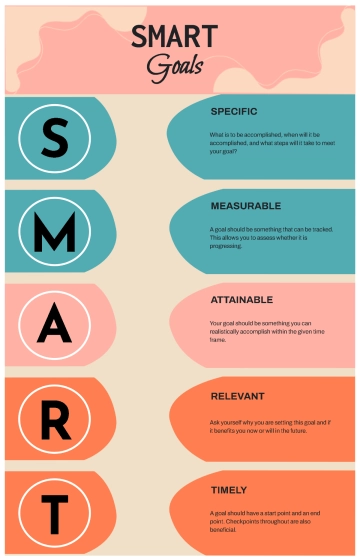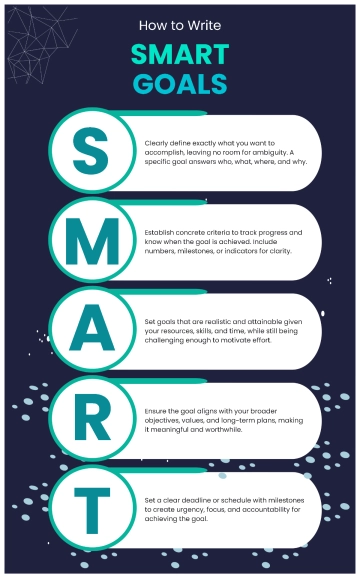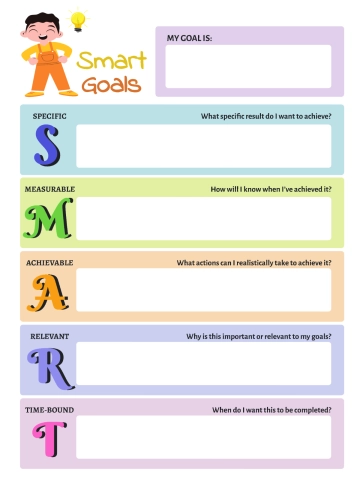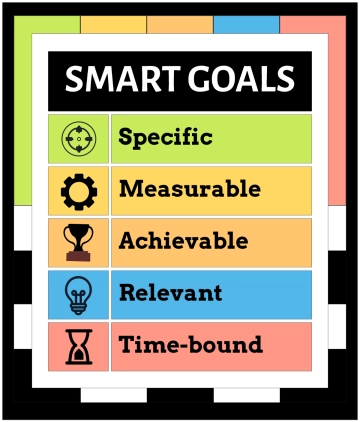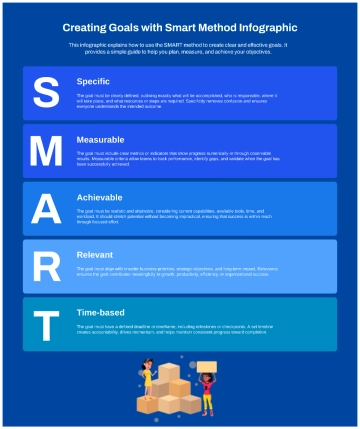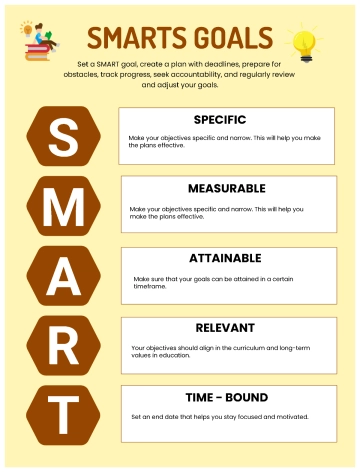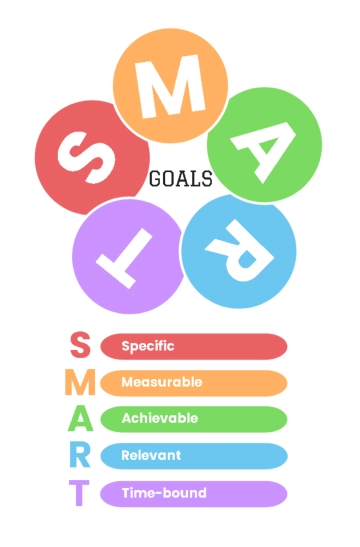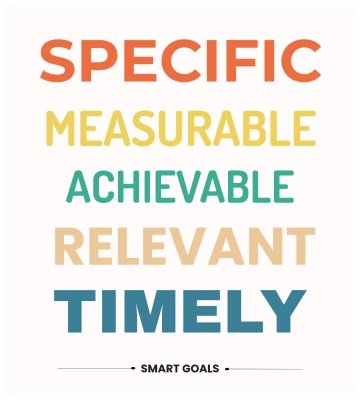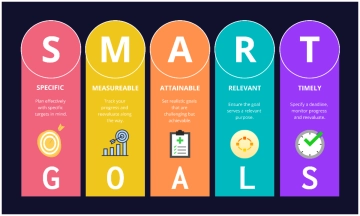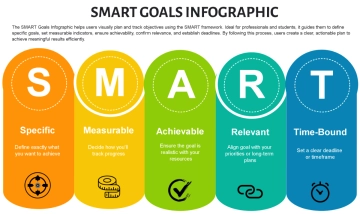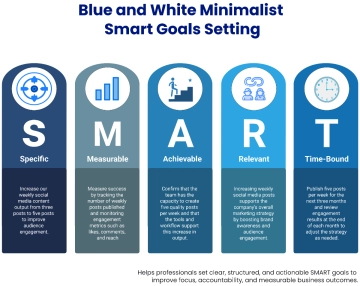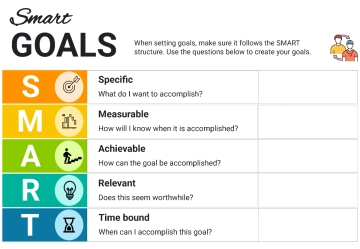Free SMART Goals for Business

Prepared by: [YOUR NAME]
Objectives: Increase online sales by 15% within the next quarter by launching a targeted marketing campaign.
SMART | Objectives |
|---|---|
Specific | Define clear and specific goals. For instance, aim to increase online sales by 15% within the next quarter by launching a targeted marketing campaign focused on social media platforms and email newsletters. Target specific customer segments based on past purchasing behavior. |
Measurable | Set quantifiable criteria to track progress. Example: Monitor website traffic, conversion rates, and the number of sales weekly using web analytics tools to gauge the effectiveness of your marketing efforts. Track the number of leads generated and conversion rates from different channels to assess which strategy yields the best ROI. |
Achievable | Ensure goals are realistic and attainable. For instance, consider whether your team has the necessary resources, skills, and technology to achieve a 15% sales increase. Evaluate the potential need for additional training or outsourcing certain tasks to ensure the team is equipped to execute the campaign effectively. |
Relevant | Align goals with broader business objectives. Example: Increasing online sales aligns with expanding market reach and enhancing customer engagement, which is crucial for long-term growth. This goal also supports the overall strategic objective of increasing market share in a competitive industry. |
Time-bound | Set a definitive timeframe. Example: Achieve a 15% increase in online sales over the next three months, ensuring that there’s a clear deadline to work towards. Set weekly and monthly milestones to track progress and adjust strategies as needed to stay on target. |
Action Plan
Market Research: Conduct thorough research on target demographics and current market trends to refine the marketing campaign.
Campaign Development: Create and design marketing materials, including social media ads, email templates, and landing pages.
Execution: Launch the marketing campaign across selected platforms, ensuring consistent messaging and branding.
Monitoring & Adjustments: Use web analytics tools to monitor the performance of the campaign weekly, making adjustments as needed to improve conversion rates.
Reporting: Provide regular updates to stakeholders, highlighting key metrics and any changes in strategy.
Accountability
Marketing Team Lead: Responsible for overseeing the development and execution of the marketing campaign.
Data Analyst: Tasked with monitoring web analytics and providing insights on campaign performance.
Sales Manager: Ensures that the sales team is aligned with the campaign and ready to handle the increase in online sales.
Project Manager: Coordinates between different teams to ensure deadlines are met and resources are allocated effectively.
Notes
Potential Risks: Consider potential challenges such as market saturation, unexpected changes in consumer behavior, or technical issues with the website that could impact sales.
Contingency Plans: Develop backup plans in case the initial campaign strategy does not yield the expected results. This could include pivoting to a different marketing approach or offering special promotions to boost sales.
Review and Adjustments
Monthly Review: Schedule monthly reviews to assess progress against milestones, making necessary adjustments to strategies or reallocating resources to areas showing the most promise.
Post-Campaign Analysis: After the three-month period, conduct a thorough analysis of the campaign’s effectiveness, documenting lessons learned and best practices for future campaigns.
- 100% Customizable, free editor
- Access 1 Million+ Templates, photo’s & graphics
- Download or share as a template
- Click and replace photos, graphics, text, backgrounds
- Resize, crop, AI write & more
- Access advanced editor
Drive your business to new heights with the SMART Goals Template for Business from Template.net. Fully customizable and editable in our Ai Editor Tool, this template is ideal for managers, entrepreneurs, and business owners who want to ensure their teams stay focused on achieving key milestones. Make it yours now!
